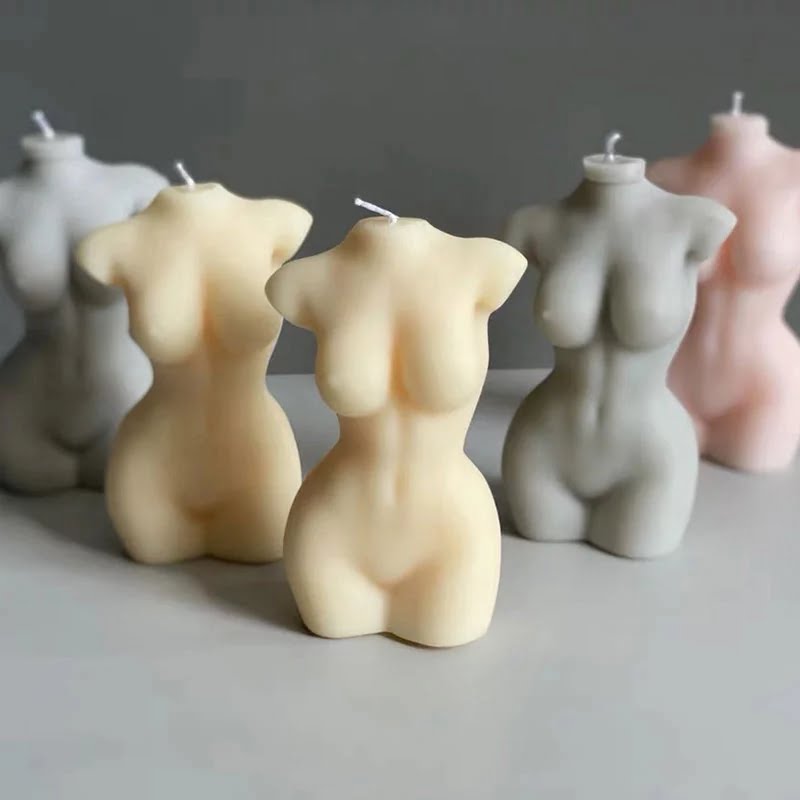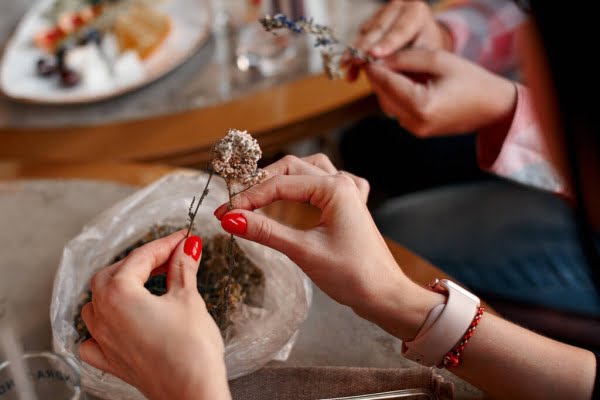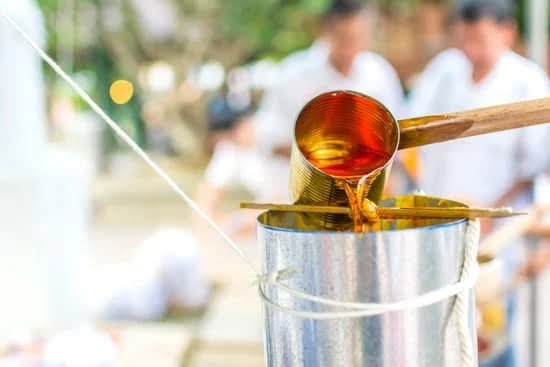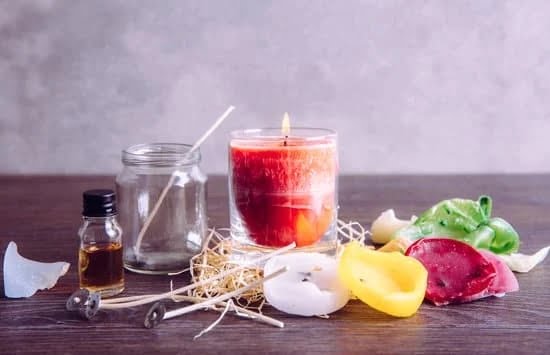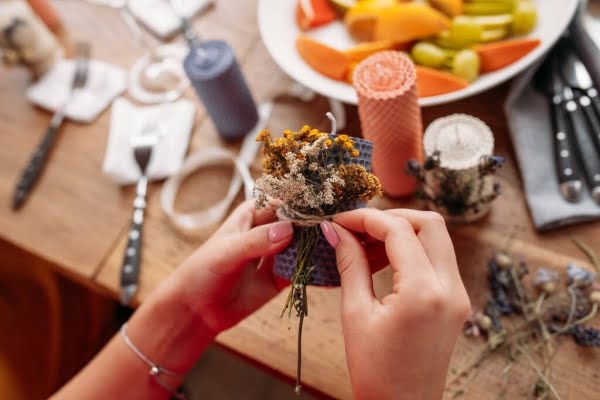Introduction
Making candles is a budget-friendly, enjoyable, and fulfilling hobby. Candles can be great gifts or decorations for special occasions and holidays. Not only do they make your home feel warm and welcoming but they also create an ambient atmosphere that can help you relax and unwind after a long day.
The cost of making candles is relatively low when compared to buying them at the store, yet it can still vary depending on the type of candle you choose to make. Generally speaking, some of the costs associated with candle making include supplies such as wax, wicks, scent and colorants, molds, double boiler (or some other way to melt wax), thermometer for melting wax to the optimal temperature, glass containers for votives or jar candles, specialized tools for cutting and using wicks as well as safety equipment like protective glasses. Additionally, certain supplies may only need to be bought once while other supplies like soy wax flakes or fragrance oils must be replenished often because they typically get used up in the process of wax pouring. The total cost for starting a candle business largely depends on what type of candles you want to create. Some elaborate designs require more supplies than simple designs so it is important to research different types of candle making projects before investing any money.
Cost of Supplies for Candle-Making
The cost of supplies for candle-making will vary depending on the type of candle that is being made. For instance, if you are making a soy wax candle, the cost of supplies will include a container or mold, wax, wicks and any fragrance oils that you’d like to add. Depending on what type of equipment you are using, additional items may also be needed such as thermometers, scales, and pouring pitchers. Tools like a double boiler may also be necessary in certain situations. The cost of these materials can range anywhere from $20 to over $100 USD depending on the size of your project and what quality ingredients you invest in. Additionally, it may be helpful to buy larger amounts of supplies at once as this usually turns out to be much cheaper than buying small quantities each time.
How to Choose Raw Materials for the Base Candle and Estimate Costs
Candles can be a great way to create a beautiful, decorative piece for your home or to give as a thoughtful gift. However, making your own candles at home can be costly if you don’t know what you’re doing. To determine the cost of the raw materials for making candles, the first step is to decide on the type of material you will use for your base candle product.
When selecting a material for your base candle, there are several factors to consider such as burn time, scent strength, texture and color. Paraffin wax is commonly used as it is affordable and burns long with strong scent and vibrant colors while soy wax is becoming increasingly popular due to being an eco-friendly alternative that lasts longer than paraffin wax. Palm or beeswax may also be used although they tend to be more expensive since they are naturally sourced from sustainable sources. Additionally, scent oils should also be selected in order to add fragrance and additional cost factors need to be accounted for such as wick supplies and molds.
Once you’ve decided on the materials for your base candle, you can use online calculators or free calculators that come with most kits purchased online. This would allow you to enter in different types of waxes or fragrances and their relative quantities, along with their prices per pound/ounce in order to get an approximate total cost per candle based on these estimates. You can then make adjustments by changing amounts or substituting cheaper materials if needed which would provide greater budget flexibility. Furthermore, certain box stores often have discounts available which would help reduce costs even further when purchasing supplies in bulk which would lower overall production costs accordingly.
Cost of Additional Supplies for Specialty Candles
When creating specialty candles, the cost of additional supplies can vary greatly. Depending on the complexity of the candle design and type of wax used, a person may need to purchase other supplies like fragrances, dyes, pigments, molds, thermometers, pouring pots or double boilers and wick pins or clamps. Dyes and fragrances might be several dollars per ounce or gram for high-quality essential oils or special blends. Pigments could range from one to four dollars per gram or milliliter. Molds can be an investment as well; a professional silicone molds costs approximately 10-20 dollars each. Thermometers can be bought at the store for 2-15 dollars depending on features and type desired. Pouring pots and double boiler could run between 20-50 dollars depending on size and material they are constructed with while wick pins usually come in packs of 90 for around 15-20 dollars. All together these additional supplies can increase costs anywhere between thirty to hundreds of dollars.
Wholesale Buying Options and Potential Savings
When it comes to the cost of making candles, there are a few different wholesale buying options one can consider to save money. For starters, you could look into purchasing large amounts of raw materials like wick, wax, and fragrance in bulk. This way you aren’t paying for individual items and have a steady supply that you can use over time. Additionally, buying containers to put your candles in from a wholesaler will also end up saving you money since there’s usually a considerable discount when buying in bulk. Finally, many candlemakers find success by searching online where they may find suppliers at lower prices than their local stores. By taking the time to do some research on the best companies to purchase materials from, an experienced candlemaker should be able to lower their costs significantly.
Strategies to Incorporate When Working on a Budget
When it comes to making candles, working on a budget can be tricky. It is important to consider the cost of materials and labor associated with the process. Some strategies that can be incorporated when working on a budget include:
1. Establishing a realistic budget: Before beginning any candle making project, it’s important to determine how much money you are willing and able to spend. Take into account all potential costs, including materials such as wax, dyes, wicks, scents, jars and labels. Consider other expenses as well, such as supplies for pouring and mixing, shipping costs and press release fees if applicable.
2. Utilizing existing resources: With technology advancing rapidly in recent years, industry professionals are afforded with greater access to resources previously unavailable before. Websites such as The Spruce Crafts offers many do-it-yourself tutorials on candle making with instructions and materials lists freely available right at your fingertips; take advantage of these tutorials whenever possible!
3. Buying in bulk: Whenever possible buy in bulk or buy larger amounts than necessary in order to save money down the line; many stores offer discounted rates when buying large quantities of a certain product or material at once! Additionally, if purchasing in larger quantities is not possible due to limited funds or storage space look for daily deals offered by wholesales retailers which may lower costs even further.
4. Reusing materials: An effective way to reduce costs when crafting your own candles is by reusing materials from previous projects whenever feasible; poured-out jars make great molds for tealights and old wicks can be thrown into simmering wax releasing lovely scents for pillar candles!.
Time Management Tips and Cost Estimates
Candle making is a relatively inexpensive craft to pursue – with the right supplies and organization, you can make beautiful, quality candles for much less than store-bought varieties. In order to get your candle-making project off to a successful start, it is important to properly manage your time and supplies. Here are some tips and cost estimates for the different aspects of candle-making:
Supplies: The cost of supplies will depend largely on the type of candles you intend to make. If you’re just starting out, try buying a basic kit which will contain all of the required items including wax, wicks and melting pots. These range in cost from around $20-$50 depending on what type of wax or molds you choose. Other items such as dyes, fragrances and decorations can also be purchased separately if desired.
Time: It is important to give yourself enough time when creating candles so that you don’t rush through any part or make mistakes that can ruin the end product. Approximately one hour should be allowed for melting and pouring each batch of wax into molds (more time may be needed for more intricate designs), and 15 minutes for each subsequent step such as trimming wicks or adding decorations. Keep in mind that often times wax needs time to cool fully before additional steps can occur – always read specific directions on products carefully!
Ongoing Maintenance: If you plan on making multiple batches of candles, there are costs associated with ongoing maintenance of equipment – this includes but is not limited to filter replacements for melting pots, safety gear (such as gloves and eye protection) restocking fragrance oils or dye over time, replacing spill mats or cleaning up spills should they occur.
Common Mistakes to Avoid
Making candles can be a fun and rewarding hobby, but it is important to understand the cost involved in making them. The most common mistake that novice candle-makers make is not calculating the total cost of all supplies that are necessary for their projects. Before beginning any project, it is essential to evaluate and consider the expense of wax, wicks, jars/containers, dyes, scents, and other items that are needed. Candle makers should also factor in the utilization costs of any tools or machines that are needed. Another key mistake made by inexperienced candle makers is purchasing materials from unknown suppliers which may result in low-quality products or unexpected shipping costs. To save on cost and time, choose to use quality ingredients from trusted sources such as Amazon or local stores. Additionally, be sure to double – check recipes/directions before proceeding with each step as reducing/omitting one crucial item could ruin a batch of costly wax. Finally, always practice safety when dealing with hot wax or melting mixtures as burns and spills can lead to unwanted expenses.
Conclusion
Making candles can be an expensive hobby or business venture, but there are ways to cut costs while still producing quality candles. Here are some ideas for saving money while making candles:
1. Reuse Disposable Molds: Investing in an appropriate candle mold is important for ensuring your candle production is consistent and successful. However, you can reuse one-time use molds to save money by simply cleaning them out after each use with a brush and hot water.
2. Try Soy Wax Blends: Soy wax blends can be trickier to work with as they require higher temperatures than traditional paraffin waxes, but switching to soy wax can definitely save you money in the long run. Soy wax burns longer and more evenly, so you won’t need as much per batch of candles plus it’s eco-friendly!
3. Buy Capsules & Bottles Bulk: To make your own bottle or container candles, buy your capsules and bottles in bulk for better discounts instead of purchasing each piece separately. You can also repurpose containers such as tin cans or glass vases that you already have around the house instead of buying new ones.
4. Hunt For Deals On Candle Supplies: Keep an eye out for sales on candle making supplies that occur at craft stores or other retailers throughout the year – stocking up on supplies when they go on sale can help you get a good deal and save some money on your next batch of candles!

Welcome to my candle making blog! In this blog, I will be sharing my tips and tricks for making candles. I will also be sharing some of my favorite recipes.

